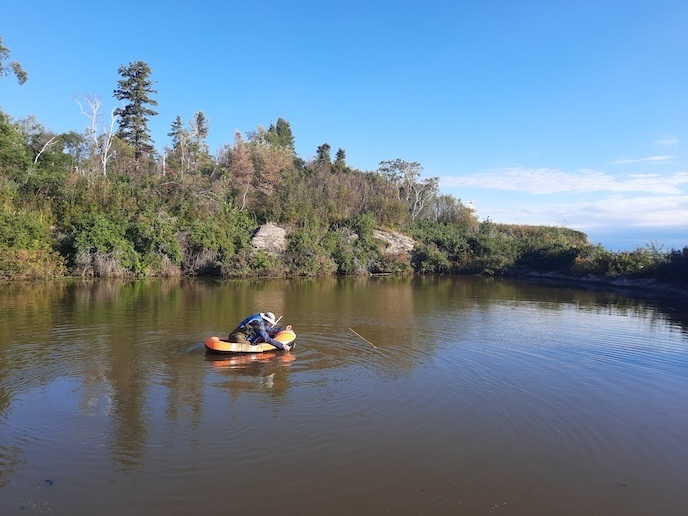Novel dating technique reveals history of Antarctica
The geological and climatic history of Antarctica is largely unknown as the continent is covered by the Antarctic Ice Sheet (AIS), making land-based observations difficult. Using comminution dating, the ComAnt project determined the transport time of Antarctic marine sediments, enabling researchers to reconstruct the interplay between sediment transport rates and global climate patterns. The time elapsed from the initial grinding of rock fragments down to very small particles only a few microns in diameter, including the transport process and age of deposition until the present day, is known as the ‘comminution age’ of the sediment. Comminution age is determined by the radioactive decay of one of the isotopes of uranium (234U), which acts as a geological clock and allows scientists to estimate the age of formation of a particle, rather than the age of formation of a rock or mineral. ‘Comminution dating is very complicated and the final result is sensitive to many processes, including the length of time of sediment transport and the intensity of weathering, particle geometry and mineralogy. These in turn, lead to very different effects of acid leaching on different samples,’ explains project coordinator Dr Adi Torfstein. To ensure accuracy, researchers studied the comminution ages of a large number of glacio-marine deposits at sites throughout the Southern Ocean. They also assessed the natural and analytical factors that affect the comminution dating approach. Interglacials transport sediments faster Samples were collected from the Amundsen Sea and the Howe – Achernar Mountains located in the Ross Sea Embayment. They were also collected from the Weddell Sea, which is located downstream of the Antarctic Coastal Current that transports eroded sediment particles all across off-shore East Antarctica. The Weddell Sea also receives erosion products from West and mainly East Antarctica via direct continental transport. ‘Thus, it is the sink for two very important and well characterised sediment transport pathways, allowing scientists to understand more clearly their mechanisms and timescales,’ says Dr Torfstein. Findings indicated that the transport rates of sediments from Antarctica into the ocean appear to be faster during interglacials (on the scale of 100-200 thousand years), when sea levels and temperatures are high, and the ice sheet volume is diminished. By contrast, the transport times of sediments during glacial periods are approximately 2-5 times longer. Furthermore, the products of continental erosion are important sources of nutrients to the oceans, controlling their fertility and therefore their efficiency in drawing down atmospheric greenhouse gases. Dr Torfstein observes, ‘It appears that from this perspective, a warmer world might hold some negative feedback mechanisms.’ Understanding past climate change COMANT results will shed light on the general workings of climate change and continent-ocean interplay, particularly in the late Quaternary period. According to Dr Torfstein: ‘The timescales of these processes are relevant to glacial-interglacial timescales and are thus less applicable for interpretation in the context of short term climate change and/or sea level rise.’ The project will benefit scientists studying Quaternary climate change processes, as well as the provenance and geochemistry of sediments. It provides a unique connection between global climate change, continental processes such as tectonics and surface erosion, and marine processes associated with particle loads and nutrient availability. In turn, these provide important insights for the interpretation and reconstruction of the history of the oceans, which are key to understanding potential future climate change.







